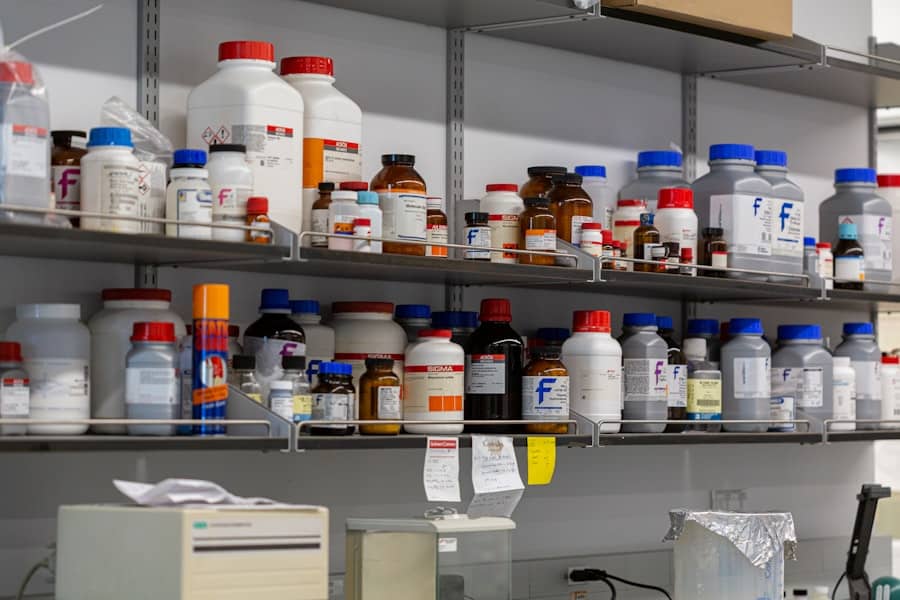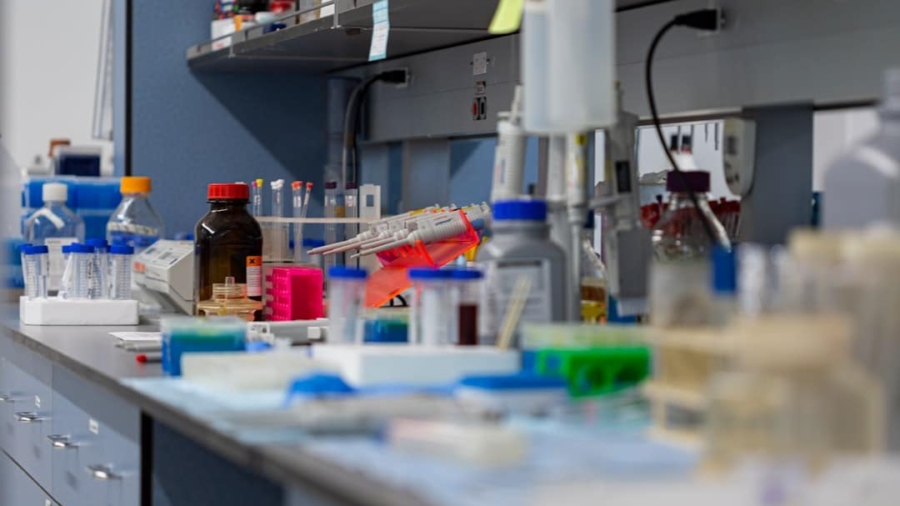The landscape of healthcare is undergoing a transformative shift, particularly in the realm of diagnostics. Low-cost diagnostics have emerged as a critical focus for biotech startups, driven by the urgent need for accessible and affordable healthcare solutions. These startups are leveraging innovative technologies and novel approaches to create diagnostic tools that can be deployed in resource-limited settings, thereby addressing significant gaps in healthcare delivery.
The convergence of biotechnology, data analytics, and engineering has paved the way for the development of diagnostic solutions that not only reduce costs but also enhance the speed and accuracy of disease detection. Biotech startups are uniquely positioned to disrupt traditional diagnostic markets, which have often been dominated by established players with high-cost infrastructures. By harnessing cutting-edge technologies such as microfluidics, CRISPR-based assays, and artificial intelligence, these startups are developing products that can be manufactured at a fraction of the cost of conventional diagnostics.
This democratization of diagnostic tools is essential for improving health outcomes, particularly in low- and middle-income countries where healthcare resources are scarce. As these startups continue to innovate, they are not only changing the way diseases are diagnosed but also redefining the very nature of healthcare accessibility.
Key Takeaways
- Low-cost diagnostics in biotech startups are revolutionizing healthcare by making medical testing more accessible and affordable.
- The importance of low-cost diagnostics in healthcare cannot be overstated, as it allows for early detection and treatment of diseases, ultimately saving lives.
- Innovations in biotechnology, such as point-of-care testing and microfluidic devices, are driving the development of low-cost diagnostics.
- Challenges in scaling low-cost diagnostics include regulatory hurdles and manufacturing costs, but solutions like partnerships and technology advancements are being implemented.
- The impact of low-cost diagnostics on global health is significant, especially in resource-limited settings where access to traditional medical testing is limited.
The Importance of Low-Cost Diagnostics in Healthcare
The significance of low-cost diagnostics cannot be overstated, especially in a world grappling with rising healthcare costs and an increasing burden of disease. Accurate and timely diagnosis is the cornerstone of effective treatment; however, many patients, particularly in underserved populations, face barriers to accessing essential diagnostic services. High costs associated with traditional diagnostic tests often lead to delayed diagnoses, misdiagnoses, and ultimately poorer health outcomes.
Low-cost diagnostics aim to bridge this gap by providing affordable alternatives that can be widely adopted. Moreover, low-cost diagnostics play a pivotal role in public health initiatives. For instance, during outbreaks of infectious diseases such as Ebola or Zika, rapid and cost-effective diagnostic tests are crucial for controlling the spread of the disease.
These tests enable healthcare providers to quickly identify infected individuals and implement necessary interventions. Additionally, low-cost diagnostics can facilitate routine screening for chronic diseases such as diabetes and hypertension, which are often overlooked in resource-limited settings. By making diagnostics more accessible, healthcare systems can improve early detection rates and promote preventive care, ultimately leading to healthier populations.
Innovations in Biotechnology for Low-Cost Diagnostics

The field of biotechnology is rich with innovations that are driving the development of low-cost diagnostic solutions. One notable advancement is the use of microfluidic technology, which allows for the manipulation of small volumes of fluids on a chip. This technology enables the creation of portable diagnostic devices that can perform multiple tests simultaneously with minimal sample requirements.
For example, startups like Biocept have developed microfluidic platforms that can detect circulating tumor cells in blood samples, providing valuable information for cancer diagnosis and monitoring at a lower cost than traditional methods. Another groundbreaking innovation is the application of CRISPR technology in diagnostics. CRISPR-based assays have shown promise in detecting pathogens with high specificity and sensitivity while being cost-effective to produce.
Companies like Mammoth Biosciences are harnessing CRISPR technology to develop rapid tests for infectious diseases that can be performed outside of traditional laboratory settings. These tests not only reduce costs but also enhance accessibility, allowing for timely diagnosis in remote areas where laboratory infrastructure may be lacking. Artificial intelligence (AI) is also playing a transformative role in low-cost diagnostics.
By analyzing vast amounts of data from various sources, AI algorithms can identify patterns and correlations that may not be immediately apparent to human analysts. Startups like PathAI are utilizing machine learning to improve the accuracy of pathology diagnoses while reducing costs associated with human error and labor-intensive processes. The integration of AI into diagnostic workflows has the potential to streamline operations and enhance the overall efficiency of healthcare delivery.
Challenges and Solutions in Scaling Low-Cost Diagnostics
Despite the promising advancements in low-cost diagnostics, several challenges remain in scaling these solutions effectively. One significant hurdle is regulatory approval.
Navigating this regulatory landscape necessitates a strategic approach, including early engagement with regulatory bodies and collaboration with experienced partners who understand the intricacies of the approval process.
While affordability is crucial, it should not come at the expense of quality.
Startups must invest in rigorous testing and validation processes to ensure that their products meet established standards. Collaborating with academic institutions or established healthcare organizations can provide valuable resources and expertise to enhance product development and validation efforts. Additionally, implementing robust quality control measures during manufacturing can help maintain consistency and reliability across batches.
Impact of Low-Cost Diagnostics on Global Health
The impact of low-cost diagnostics on global health is profound and far-reaching. By making diagnostic tools more accessible, these innovations have the potential to significantly improve health outcomes in underserved populations. For instance, low-cost rapid tests for malaria have been instrumental in reducing mortality rates in regions where the disease is endemic.
These tests enable healthcare workers to quickly diagnose malaria cases and initiate treatment without delay, ultimately saving lives. Furthermore, low-cost diagnostics can empower individuals to take charge of their health by facilitating self-testing and monitoring. For example, home-based testing kits for conditions such as HIV or diabetes allow individuals to manage their health proactively without relying solely on healthcare facilities.
This shift towards patient-centered care not only enhances individual health outcomes but also alleviates pressure on healthcare systems by reducing the burden of preventable diseases. The economic implications of low-cost diagnostics are equally significant. By reducing healthcare costs associated with late-stage disease management and hospitalizations, these innovations can lead to substantial savings for both patients and healthcare systems.
Moreover, improved health outcomes contribute to increased productivity and economic stability within communities, creating a positive feedback loop that benefits society as a whole.
Successful Case Studies of Biotech Startups in Low-Cost Diagnostics

Revolutionizing Tuberculosis Testing
One notable example is Cepheid, which developed a rapid molecular diagnostic platform capable of delivering results within hours at a fraction of the cost of traditional laboratory testing. Their GeneXpert system has been widely adopted for tuberculosis testing in low-resource settings, significantly improving diagnosis rates and treatment initiation.
Democratizing Genetic Testing
Another compelling case is that of 23andMe, which has revolutionized genetic testing by offering affordable direct-to-consumer genetic testing services. By leveraging advancements in genotyping technology and data analytics, 23andMe has made genetic information accessible to millions at a price point that was previously unattainable. This democratization of genetic testing has empowered individuals to gain insights into their health risks and ancestry while fostering a greater understanding of genetics within the general population.
Early Cancer Detection through Blood-Based Tests
A third example is GRAIL, a startup focused on early cancer detection through blood-based tests. GRAIL’s Galleri test aims to identify multiple types of cancer at an early stage when treatment is most effective. By utilizing advanced genomic sequencing technologies and machine learning algorithms, GRAIL has developed a test that holds promise for significantly reducing cancer mortality rates while being cost-effective compared to traditional screening methods.
Future Trends and Opportunities in Low-Cost Diagnostics
As the demand for low-cost diagnostics continues to grow, several trends are emerging that present exciting opportunities for biotech startups. One such trend is the increasing integration of telemedicine with diagnostic services. The COVID-19 pandemic accelerated the adoption of telehealth solutions, highlighting the potential for remote consultations combined with at-home diagnostic testing.
Startups that can develop seamless platforms integrating telemedicine with low-cost diagnostics will likely find significant market opportunities. Additionally, there is a growing emphasis on personalized medicine, which tailors treatment approaches based on individual patient characteristics. Low-cost diagnostics that enable rapid genetic profiling or biomarker identification will be crucial in advancing personalized medicine initiatives.
Startups focusing on developing point-of-care tests that provide actionable insights into individual health profiles will be well-positioned to capitalize on this trend. Furthermore, sustainability is becoming an increasingly important consideration in healthcare innovation. Startups that prioritize environmentally friendly manufacturing processes or develop biodegradable diagnostic materials will resonate with consumers who are increasingly conscious of their environmental impact.
This focus on sustainability could differentiate startups in a crowded market while contributing positively to global health initiatives.
The Potential of Biotech Startups in Revolutionizing Low-Cost Diagnostics
The potential for biotech startups to revolutionize low-cost diagnostics is immense, driven by their agility, innovative spirit, and commitment to addressing pressing healthcare challenges. As these startups continue to push the boundaries of technology and creativity, they are not only transforming how diseases are diagnosed but also reshaping the future of healthcare delivery itself. The convergence of biotechnology with data analytics and engineering holds promise for creating solutions that are not only affordable but also scalable and effective across diverse populations.
In an era where access to quality healthcare remains a fundamental right yet often out of reach for many, low-cost diagnostics stand as a beacon of hope. By empowering individuals with timely information about their health status and enabling healthcare systems to respond more effectively to public health challenges, biotech startups are playing a crucial role in advancing global health equity. As we look ahead, it is clear that these innovations will continue to shape the future landscape of diagnostics and healthcare delivery worldwide.
A related article to “How Biotech Startups Are Scaling Low-Cost Diagnostics” is “The Best Software for Interior Design in 2023.” This article discusses the top software options available for interior designers to streamline their workflow and create stunning designs. For more information on software recommendations, check out this article.
FAQs
What are biotech startups?
Biotech startups are companies that use biological processes, organisms, or systems to develop products or technologies that improve human health, agriculture, and the environment.
What are low-cost diagnostics?
Low-cost diagnostics are medical tests or tools that are affordable and accessible to a wide range of people, especially in low-resource settings. These diagnostics are crucial for early detection and management of diseases.
How are biotech startups scaling low-cost diagnostics?
Biotech startups are leveraging innovative technologies such as microfluidics, lab-on-a-chip, and point-of-care testing to develop low-cost diagnostic tools. They are also streamlining manufacturing processes and utilizing digital health platforms to reach more people.
What impact do low-cost diagnostics have on healthcare?
Low-cost diagnostics have the potential to improve healthcare access and outcomes, especially in underserved communities. They enable early detection of diseases, monitoring of treatment effectiveness, and overall cost savings in the healthcare system.
What are some examples of low-cost diagnostic technologies developed by biotech startups?
Examples of low-cost diagnostic technologies include portable DNA sequencers, rapid diagnostic tests for infectious diseases, smartphone-based diagnostic tools, and affordable imaging devices for medical imaging.

